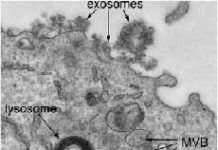The male sex appears to be a risk factor for severe disease and death due to COVID-19 in the cancer patient population according to findings from a systematic review and meta-analysis published by Anup Kasi of the Department of Medicine, Division of Medical Oncology, Kansas University Medical Center, Kansas City, Kansas, US and colleagues on 24 August 2020 in the EClinicalMedicine, published by The Lancet. The finding may help in guiding the decision making in cancer care and patient counselling in the clinics especially because societies move towards re-opening and towards a new-normal.
The authors wrote in the study background that early observational findings suggested that COVID-19 is associated with disproportionately worse outcomes in males compared to females with subsequent studies providing statistical evidence for this clinical phenomenon and indicating that morbidity and mortality are higher in males despite no difference in the proportion of infected cases between the sexes. However, the pathogenesis behind this sex bias is not yet established.
A number of theories have been proposed in that regard, for example potential role of androgenic hormones in the pathogenesis, potential sex differences in one or more of the multstep immunopathogenetic pathway including virus entry, innate immune virus recognition, and induction of adaptive immune response. Other epidemiological and clinical variables have emerged as risk factors for COVID-19 including age, comorbidities, etc. Although the reason is unclear, none of the epidemiological association of sex with adverse outcomes associated with COVID-19 appears to be established in the general community population.
Further line of reasoning suggests a potential link between certain male-specific cancers and COVID-19 pathogenesis. In particular, seminal vesicles have been found to express ACE2 and TMPRSS2 which mediate SARS-CoV-2 cellular entry and SARS-CoV-2 has been detected in semen. Although not well established, inflammation as a result of SARS-CoV-2 in the vicinity of the prostate may adversely impact patients with established prostate cancer while from the viewpoint of the infection, the male sex organs may provide a viral reservoir.
The fact that the results from several published studies examining whether there is sex bias within the adverse outcomes associated with COVID-19 in the cancer population are inconclusive and inconsistent prompted the authors to conduct a systematic review and meta-analysis to synthesize the evidence behind sex bias within COVID-19 associated disease severity and death specifically within the cancer patient population.
The authors identified the published articles which evaluated the adverse outcomes associated with COVID-19 in the cancer population from its beginning until June 2020 by searching PubMed and EMBASE, ASCO 2020 Virtual Annual Conference, AACR 2020 COVID-19 and Cancer, ESMO conferences, medRxiv and bioRxiv. The authors included in the analysis prospective or retrospective studies in English language that provide outcomes data with sex differences in the cancer population.
The primary outcomes of interest were pooled odds ratios (ORs) of severe disease, all-cause death, and the composite of severe disease and death attributable to COVID-19 in male versus female cancer patients.
Overall, 3968 patients from 17 studies were analyzed in retrospective study settings. Overall, pooled ORs of the composite of severe disease and all-cause death in the setting of COVID-19 in males versus females was 1.60 (95% confidence interval, 1.38–1.85). The risk of severe disease or death were both independently increased in males versus females.
The generalizability of the results is supported by analyzed studies that span across multiple countries from several continents. The analysis reports multiple clinical outcome associations of which are all in agreement, strongly supporting the conclusion.
However, the study has a number of limitations. The studies included were conducted in retrospective settings. Reported ORs derived from univariate analyses were used in the meta-analysis due to lack of reported multivariate adjusted ORs in included studies. However, sensitivity analysis showed that there was no significant difference between results reported from univariate and multivariate models. Pre-print databases were included in the meta-analysis despite their lack of peer review. The studies were scrutinized for quality using two separate scales prior to inclusion to control the quality of the meta-analysis. Furthermore, there was overlap in the clinical outcomes evaluated. The definition of severe disease used in the included studies consisted of both intensive care unit admission (ICU) and death. For this reason, whether male sex was associated with severe disease excluding mortality remains unclear and further studies to explain this association are warranted.
The authors concluded that findings from their systematic review and meta-analysis show that male patients with cancer compared to female cancer patients have higher risk of severe COVID-19 as defined by disease course requiring ICU admission and intubation and higher risk of all-cause death. These findings establish sex as a risk factor in the cancer patient population and suggest that it should be taken into account in the evaluation of COVID-19 risk in the cancer setting.
Reference
Sex-bias in COVID-19-associated illness severity and mortality in cancer patients: A systematic review and meta-analysis. EClinicalMedicine; Published online 24 August 2020. DOI: https://doi.org/10.1016/j.eclinm.2020.100519







